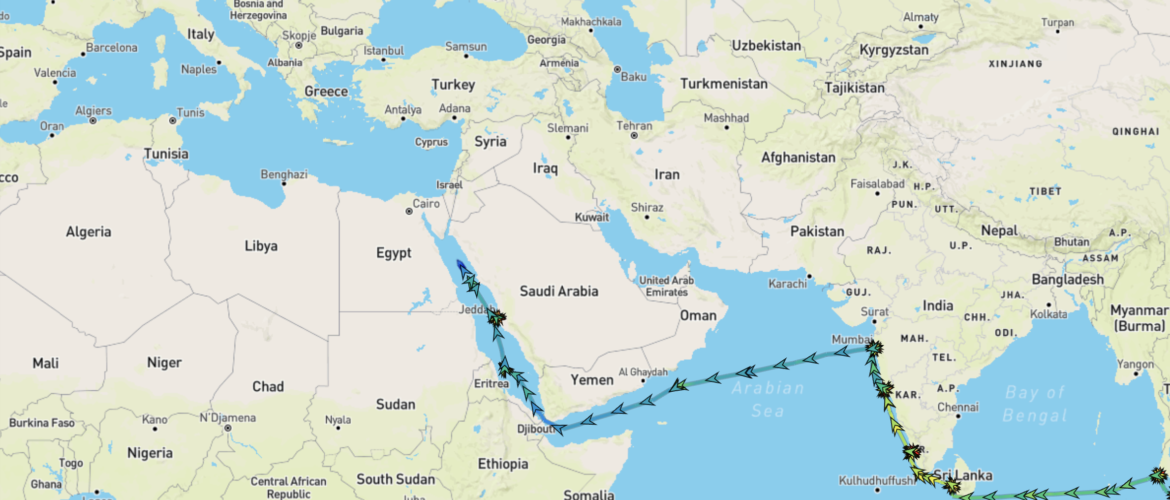Noon Report:
- Location: N 25° 17.50′, E 036° 11.90′
- Speed: 19 knots
- Course: 329º
- Weather: High Overcast
- Temperature: 25 C; 77 F
- Wind: SSE 7 knots; 8 mph
- Sea: 3 foot swells
A bit quicker getting up this morning.
The usual 9:30 lecture was moved to 9:00 because of a crew safety drill at 10:00.
Once again, the drill was a procedure test for a fire in the laundry area (all the way up to “abandon ship”).
While not all drills involve a fire in the laundry area, it quite often shows up. You’d think the people doing laundry would be more careful (I’m kidding)!
Anyway, at 9:00 a.m. was a fascinating lecture on Petra (“the Rose-red city half as old as time” – in 1822 Petra “the lost city” had been rediscovered by the Western world, and John William Burgon, wrote these now famous lines about Petra).
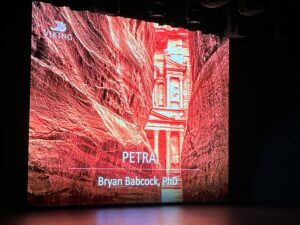
Our lecturer started with the “Treasury” of Petra. He talked about the “urn” seen in the top center of this schematic and about different myths thru the years about what it contains (some kind of treasure – so the Bedouins, Greeks, Romans and British all tried shooting at the urn to get it to crack open to release the “treasure”. Turns out this is just a solid stone sculpture – now very chipped).
The “Treasury” is actually the mortuary temple built by the Nabateans for their 1st century AD King Aretas III. The eagles on top are to carry the soul to heaven , the dancing amazons on the second tier represent life, and Castor & Pollux (Roman gods) on the bottom tier represent life and death since they split their time between heaven and the underworld. Petra was the main hub of the Silk and Spice roads – from here you could go West into Egypt, North up into Europe, or East into Persia so it was a very rich and cosmopolitan center between many cultures (built around the time of the Hellenistic and Roman Empires by the Nabatean Arabs, the architecture of Petra is Roman style architecture with Corinthian columns).
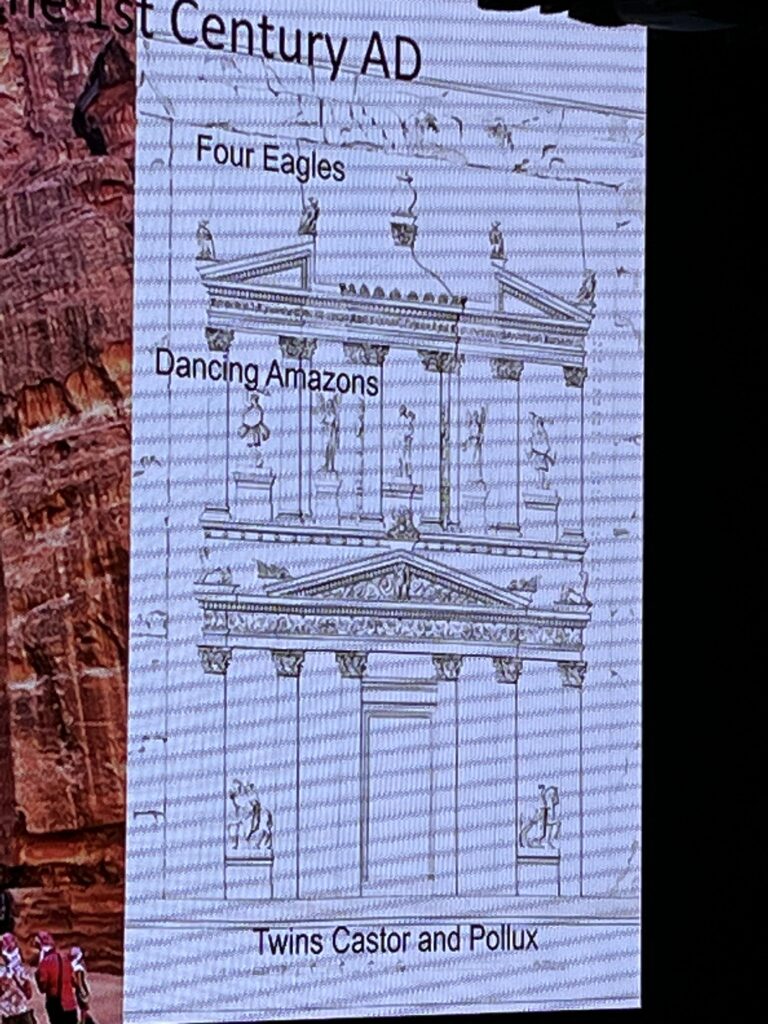
He talked about many other things to see and do in Petra – and what his plans are for tomorrow.
CAN’T WAIT!
We’ve been checking the weather because…desert. Turns out there’s a cold front moving thru. The current weather shows a hi of 52 and a low of 34. While we’re there it should be somewhere between 46 and 50 (and yes, these are Fahrenheit).
The 11:00 lecture talked about the development of Egyptian Hieroglyphs and Chinese Characters and the work to develop a translation of the Hieroglyphs.
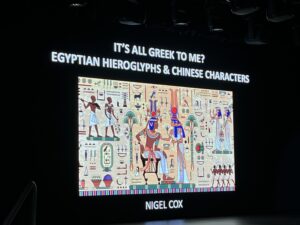
For lunch today the featured food was kaiserschmarrn.
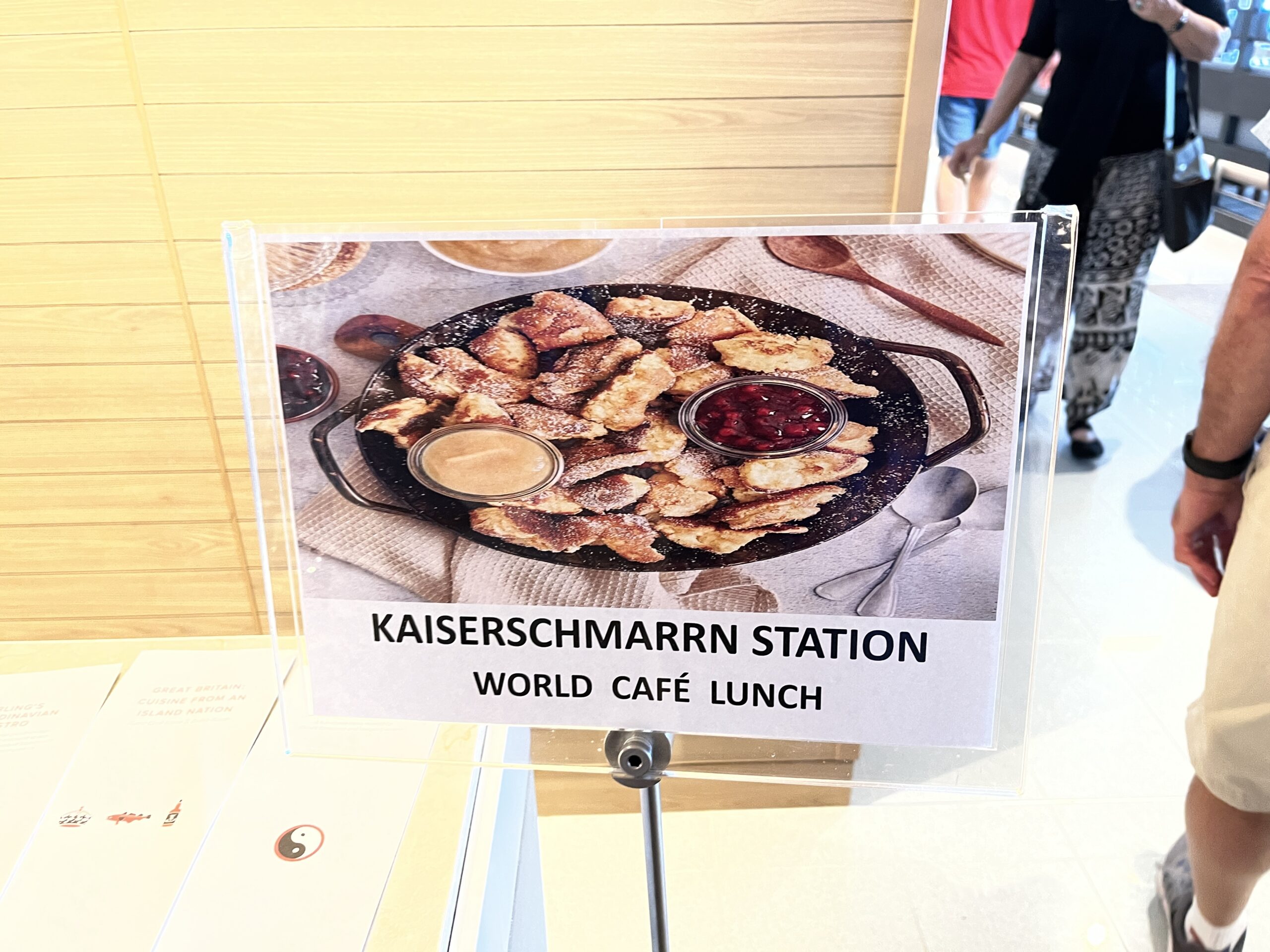
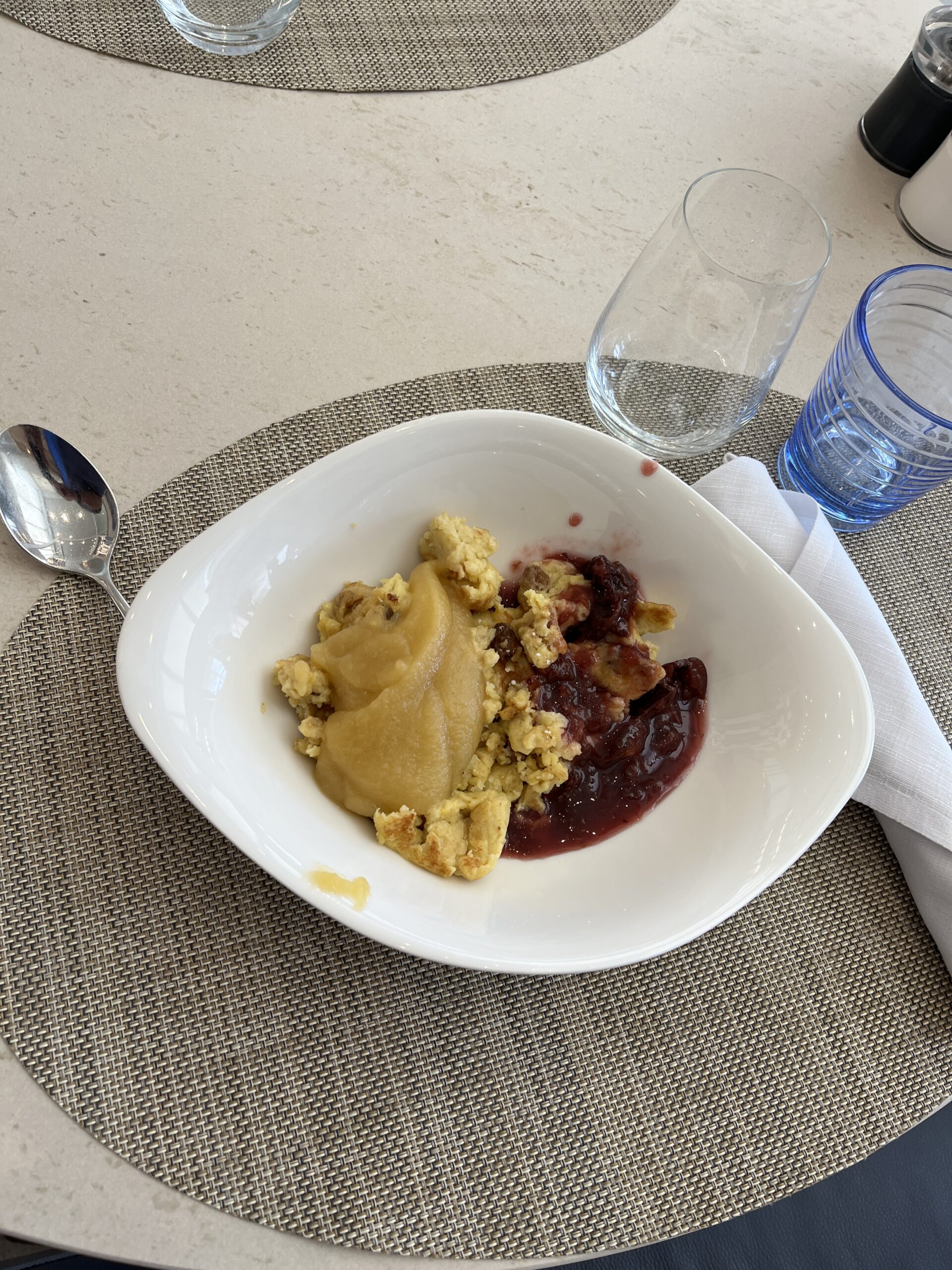
Imagine a pancake, torn into small pieces, and covered with applesauce and plum sauce (with a little powdered sugar thrown in. It was actually pretty good.
Following lunch we hosted a quick checkin meeting with the people joining us on an excursion to Luxor and the Valley of the Kings in Egypt on Wednesday. Things look pretty set there so there’s obviously something we haven’t thought of. They seem to be participating in the same cold front (though not quite as cold as Petra so it should actually be pretty pleasant in the Valley of the Kings). We’ll take any coolness we can find.
Then it was back to the room to write/publish blog posts.
At 4:30 we attended a talk by our Cruise Consultant (the guy who sells future cruises).
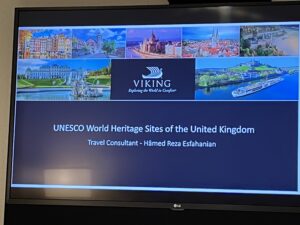
We usually ignore these but this one was on UNESCO World Heritage sites in Britain so we decided to check it out.
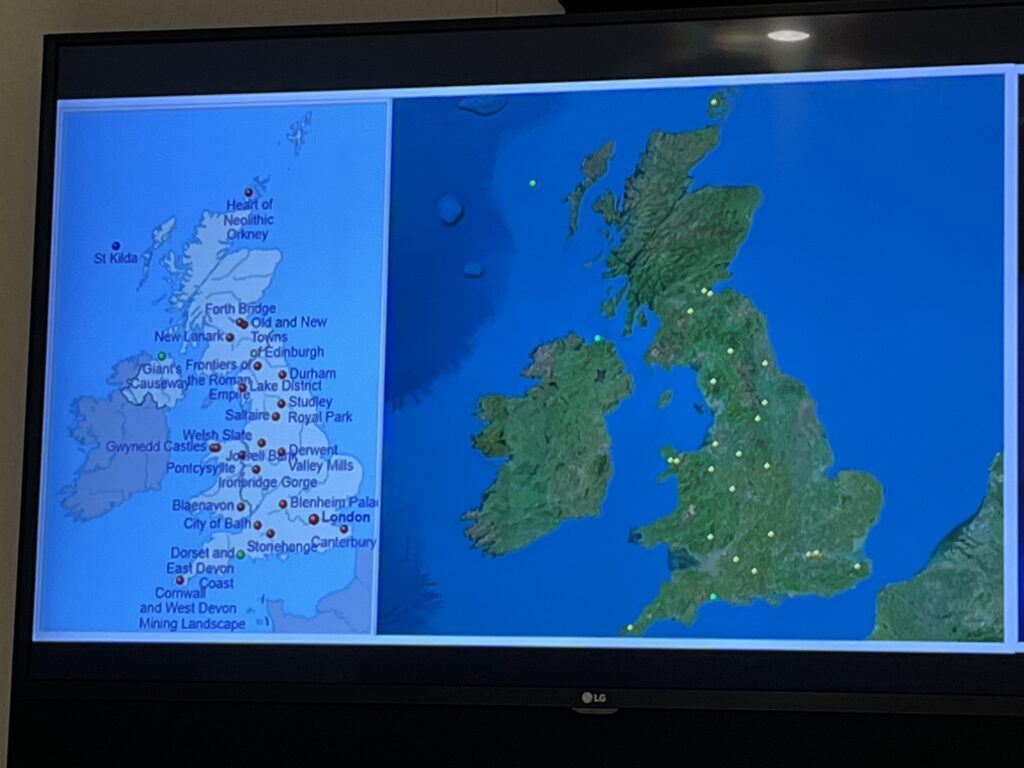
He did talk about a number of these sites around Britain…
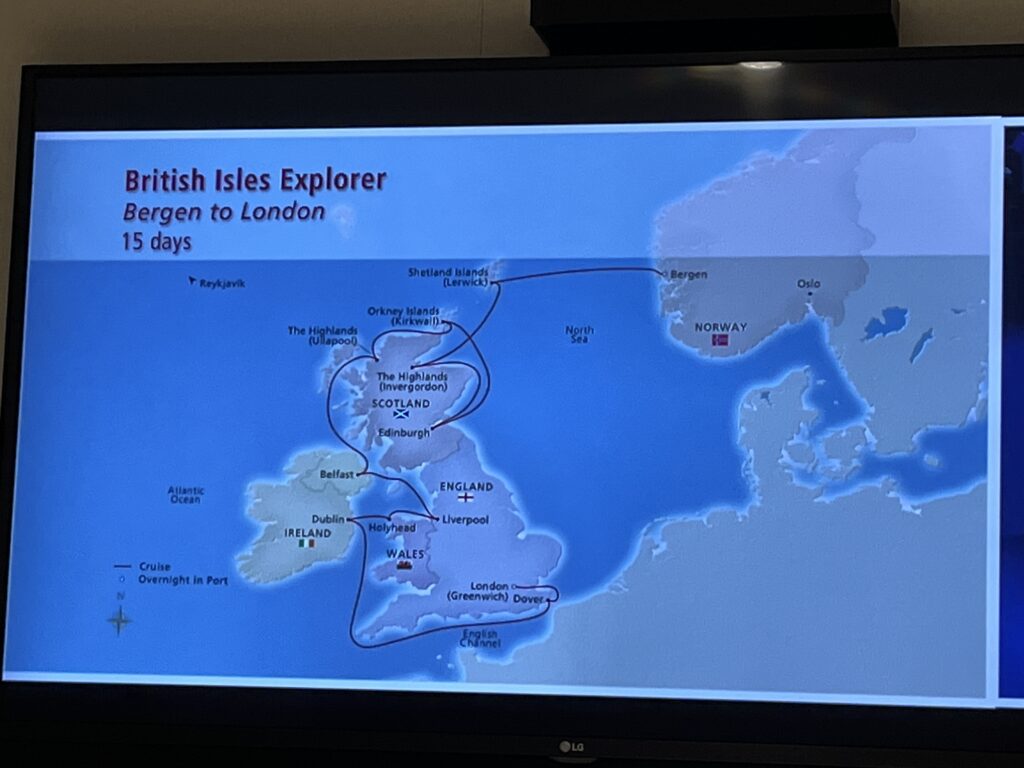
The 6:30 lecture by our resident Astronomer…
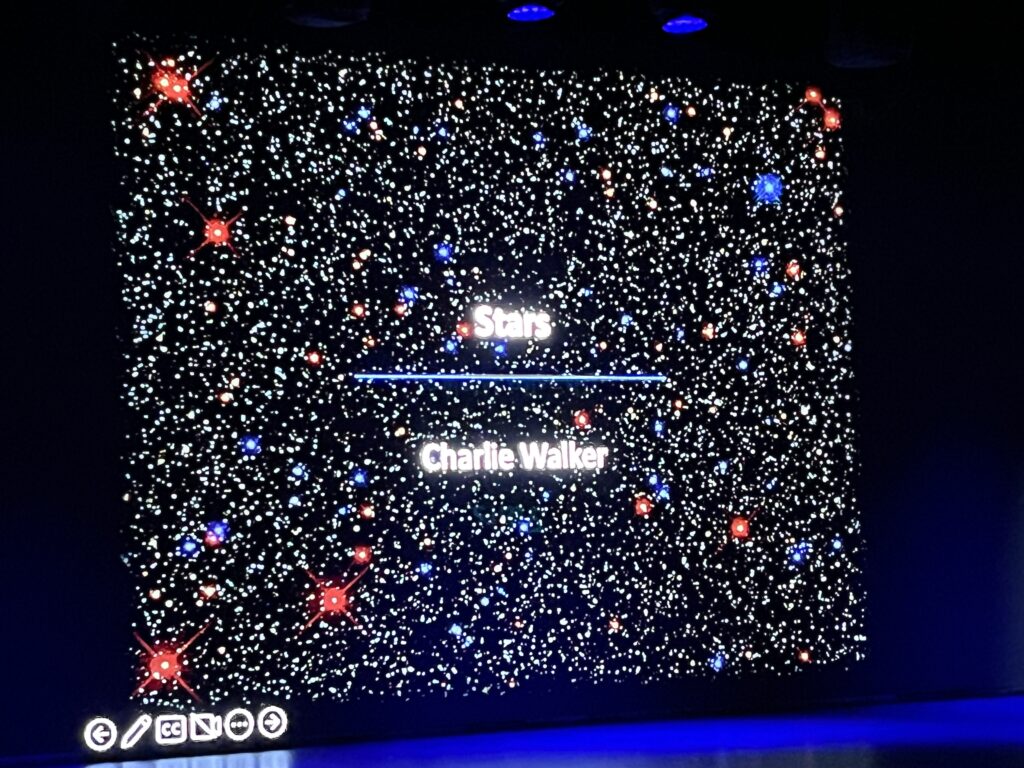
…took a deep dive into the different types of stars we see around the universe. It was pretty cool and we learned some new stuff about the different types of stars, their characteristics, their life expectancy, and what happens to them after they die.
Then it was a quick dinner and BBB (11/21 is almost 50%). We started strong and had trouble toward the end.
We called it a quick and early night since our wakeup tomorrow is 0-dark:30 (5:30 am).
Gotta get on the road to Petra.
More later,
R
Cheryl’s Factoids on Petra:
- Petra was built by the Nabatean Arabs around the time of the Hellenistic and Roman Empires. Forgotten for 1,000 years, there were always myths about a lost city in the desert, however the local tribes would rob and/or kill any foreigners venturing into the desert. It was rediscovered in 1822 by John Lewis Burckhardt who learned to speak Arabian, understood the Muslim customs, and disguised himself as an Arab. He told the local Beduins that he wanted to make a sacrifice at the grave of Moses’s brother Aaron (who was buried nearby according to tradition – also the rock that Moses hit with his staff to obtain water is in this area). While there, he searched around and found Petra.
- In Biblical times this area was the land of the Edomites – famous for all its copper. When it was conquered by the Babylonians who removed the local Nabateans, the Beduins moved in followed later by the Greeks and Romans – so at Petra you can see a portion of the Roman road that ran from the Syrian border through Petra then down to the Red Sea, as well the Greek/Roman amphitheater, and a Byzantine monastery.
- As you will see from photos, the cut through the cliffs that lead into Petra are heavily carved by flood water. The ancient city of Petra was protected from flash flooding by carving hundreds of cisterns which could contain the flood water from winter storms. Using a gravity system, all spring water and every drop of rain that fell as runoff was collected by channels of fired clay pipes that collected and emptied the water into these underground cisterns. In 551 AD there was a huge earthquake which destroyed many of the buildings plus most of the water saving structures, so the inhabitants moved out of the city into nearby fertile valleys and the city was “lost” to the outer world.
- In 1985, UNESCO listed Petra as one of the modern seven wonders of the world.
